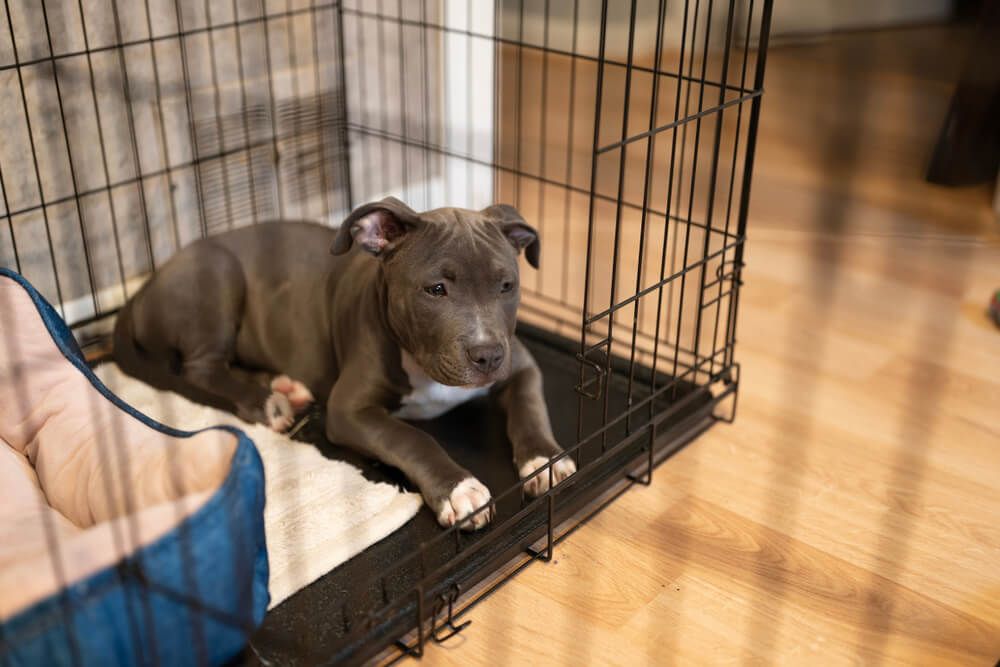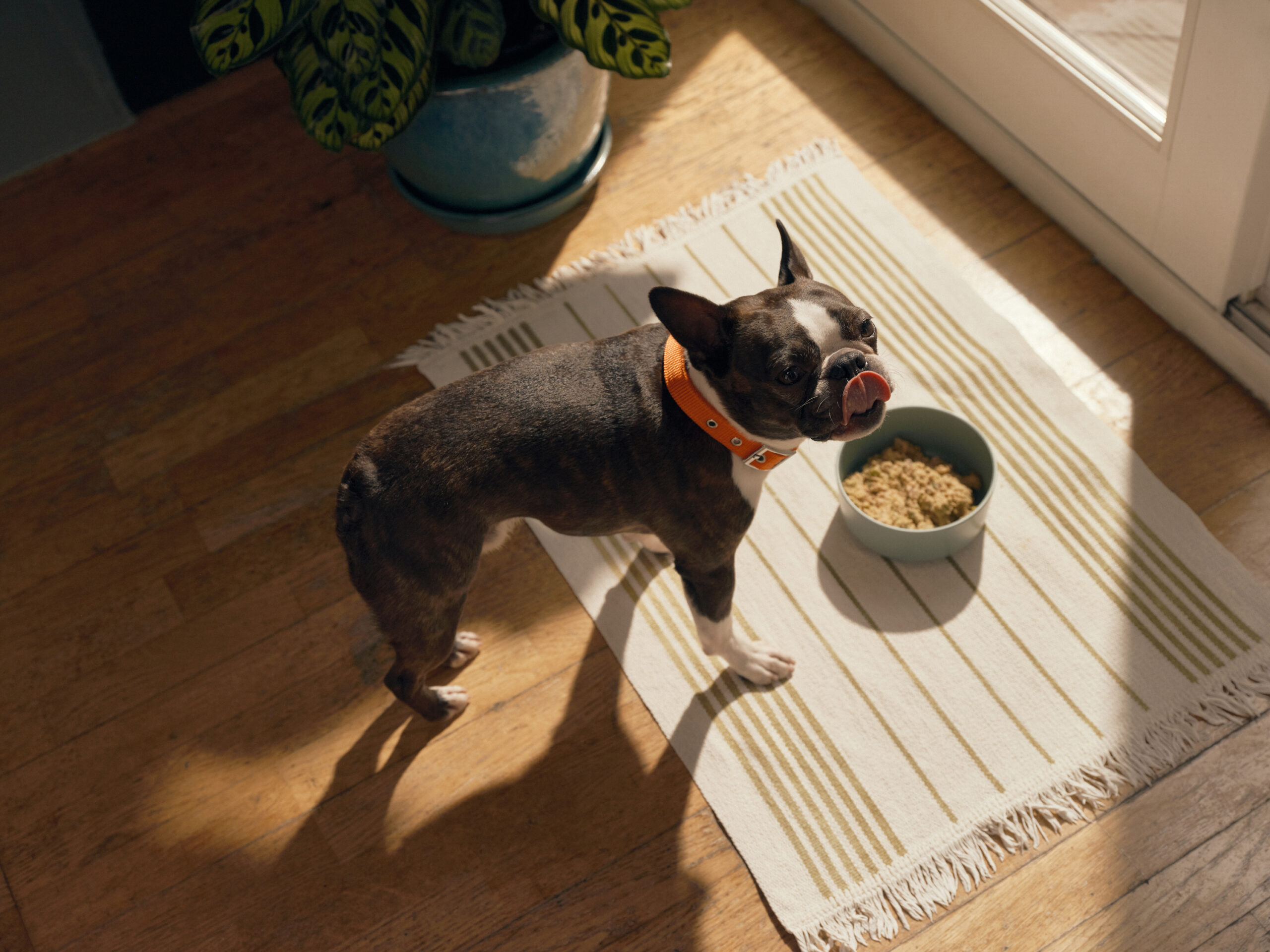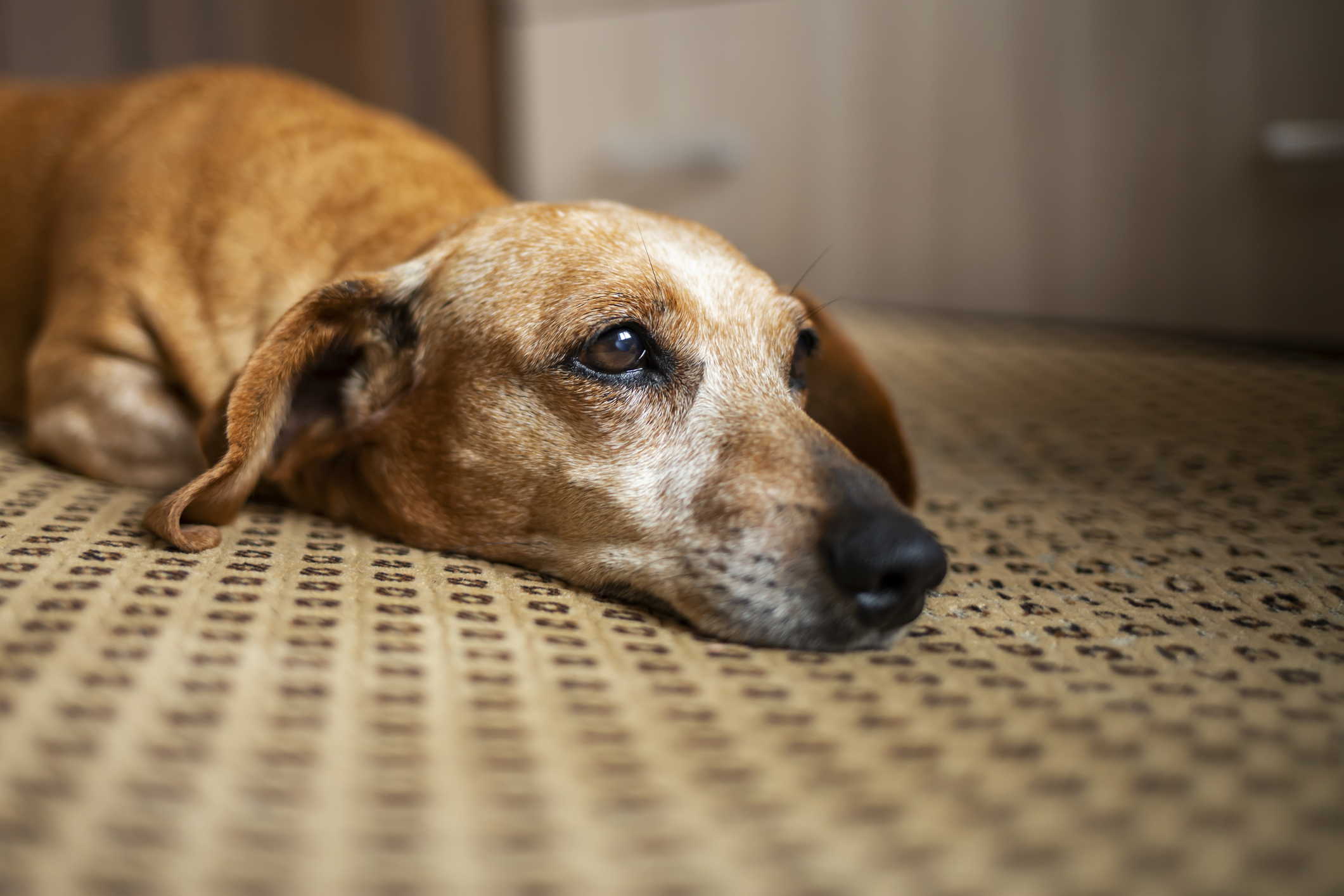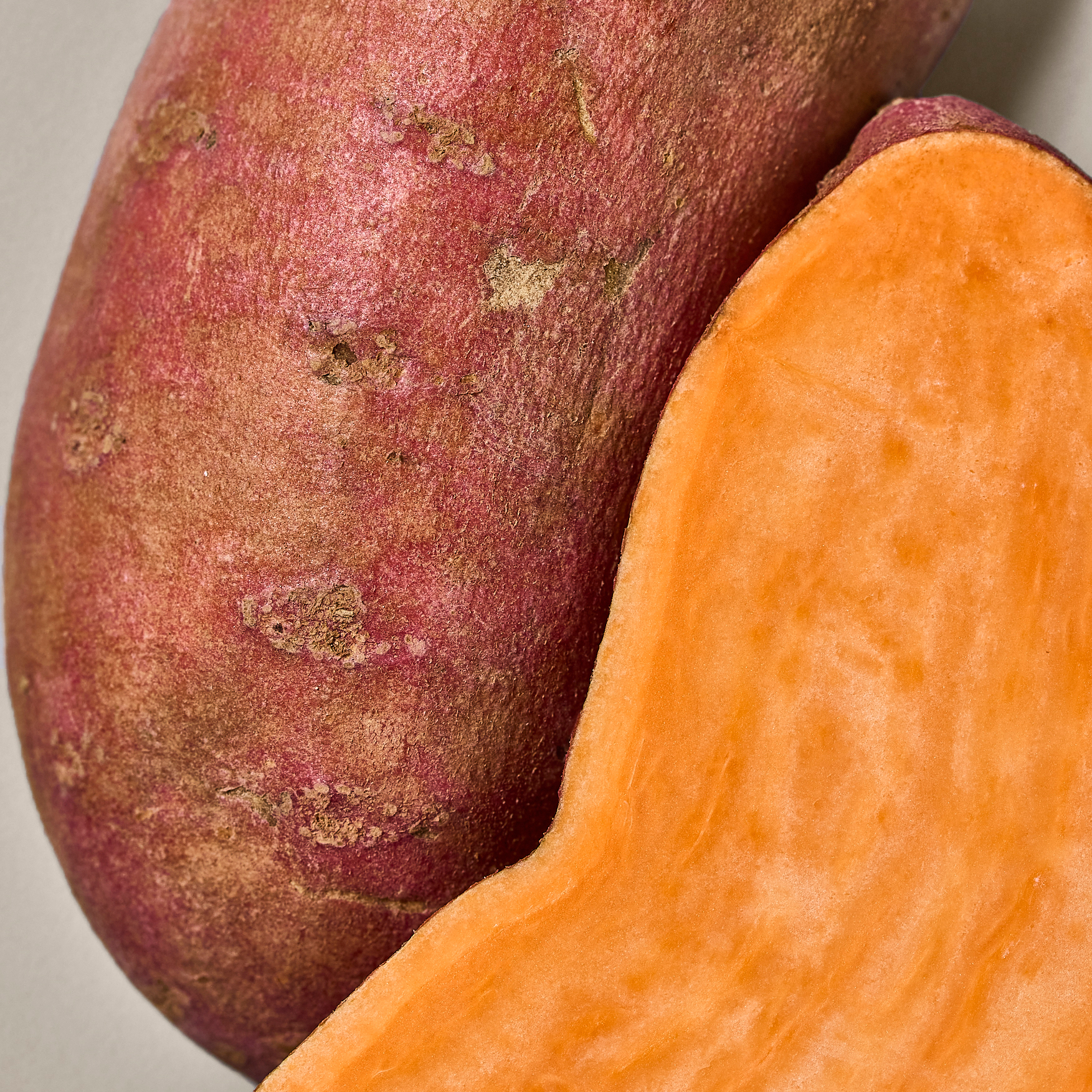Hey Ollie blog readers! We’re offering you an exclusive 60% OFF your starter box! Try now!
After much anticipation and preparation, it’s time to bring home your new puppy! While this can be a fun and exciting time, it’s also a big transition for both of you. Ensure your first night with a new puppy, and every night thereafter, is smooth and stress-free with these tips.
Preparing Your Home for a New Puppy
Before your first night with a new puppy, you must prepare your home and yard to ensure the puppy’s safety, comfort, and well-being. Removing potential hazards and creating safe areas to play, rest, and learn gives you peace of mind while helping your puppy feel at home in their new environment.
Puppy Proofing Your Space
Puppy proofing involves removing hidden dangers from your puppy’s environment to prevent accidental injury or loss of life. To do this, you’ll need to learn about common household toxins and dangers. You’ll also need to think like a puppy to spot and prevent potential risks inside and outside your home. While puppy proofing is an ongoing task, aim to complete most of it before your puppy’s first night at home. This work includes:
- Identifying Hazards: Many seemingly ordinary items are toxic or harmful to puppies, including certain foods, decorations, hygiene items, and household cleaning or repair products. Familiarize yourself with common dangers so you can recognize them in your home, garage, or yard.
- Using Crates and Gates: Confinement or restricting your puppy’s access to certain areas is a humane and effective way to prevent many common pet emergencies. Remember, puppies aren’t pre-programmed for good behavior! Unsupervised or unrestrained puppies may escape through an open door, destroy your favorite chair, fall down the stairs, or get into the trash. Crates and gates make it easy to observe your puppy’s behavior and ensure their safety. They also help establish a routine for resting and can accelerate potty training.
- Creating Safe Play Areas: Your puppy’s play area should be a safe place to explore, exercise, and have fun. Remove access to any dangers such as electrical cords, breakable items, toxic plants, and harmful products. Ensure the entire space is secured by latching gates or a tall barrier to prevent escape. Finally, provide nonslip flooring to protect your puppy’s developing joints.
Setting Up a Cozy Sleeping Area
After your puppy’s big homecoming, they’ll need a good rest! Creating a thoughtfully located, safe, and comfortable sleeping area will ease your puppy’s transition, minimize separation anxiety and stress, and help you both sleep well.
Before your first night with a new puppy, consider key details of their sleeping arrangements.
- Should I let my puppy sleep with me the first night? While it’s ultimately your choice, professional dog trainers usually advise against letting your puppy sleep with you on the first night. Although it might seem reassuring, a new puppy may find this much freedom overwhelming or use it as an opportunity for mischief. Sleeping in a properly-sized crate provides a sense of comfort and security during your puppy’s early months while preventing bad habits such as potty accidents or destructive behavior. Help your new puppy feel at home in their crate by providing a cozy bed and a plush toy to snuggle.
- How do I choose the right bed or crate? As a general rule, puppies should be able to comfortably stand up, lie down, and turn around in a properly sized crate. Use caution with large crates as puppies may use the extra space as a potty spot. For large or giant breeds, consider a crate with an adjustable divider so that you can adjust the space as your puppy grows. When selecting a bed, look for one that is washable and chew-resistant, and matches your puppy’s size and sleep style (e.g., round beds for puppies who prefer to curl up or wide and flat mattress-style beds for those who sprawl).
- Where should I position my puppy’s bed and crate? Social contact helps puppies feel safe, secure, and like part of the family. Position your puppy’s bed, crate, and other resources in the central areas of your home. Consider investing in a second crate to keep near your bed. The close proximity will reassure your puppy and help you recognize when they need to go potty.
Establishing a Routine
Everything about your puppy’s life—from you, to your home, to your lifestyle—will be brand new. Establishing a predictable daily routine for your puppy’s care is one of the best ways to help them build confidence and a sense of comfort in their new home while also accelerating early training and trust. Consistency is key, so be ready to start this routine on your first night with your new puppy.
Nighttime Feeding Schedule
Puppies need high-quality nutrition in precise portions to keep up with their growing bodies, fast metabolism, and boundless energy. Feeding several small meals at specific times of the day will help your puppy feel satisfied and strong, while also improving their potty training by creating more predictable poops. On your first night with your new puppy, take things slow. If necessary, wait an hour or two after travel to offer your puppy some food. You may need to warm it slightly or soak it in warm water to make it more enticing. Take your puppy outside or to their designated potty area immediately after they finish eating, again after an hour, and/or before bedtime. This ensures they will be comfortable and ready to sleep. After your first night together, you may adjust your puppy’s evening meal to your chosen time.
Pre-Bedtime Play and Potty Time
Promote restful sleep for you and your puppy by making a habit of pre-bedtime play and potty time. Pre-bedtime play gives your puppy a safe and appropriate way to expel any built-up energy and challenge their growing minds. Effective play exercises your puppy’s brain and body through interactive games such as fetch, tug, chase, and short, high-energy training sessions. Puzzle games can also provide satisfying stimulation by encouraging naturally satisfying behaviors (e.g., sniffing, licking, foraging) and problem-solving.
Although you should take your puppy to your chosen potty area before and after playtime, always observe your puppy during play so that you can recognize signs that they need to go. These may include:
- Disengaging or wandering away
- Sudden sniffing, especially in a specific spot
- Circling
If you see any of these signs, call your puppy to you or gently pick them up and take them right to their designated potty area. After they go, offer quiet praise and a tasty treat. Positive rewards will help your puppy connect the behavior with the location, so they’ll eventually start using the spot on their own or let you know when they need to go. Until then, it’s important to consistently guide them to the right place to reinforce the behavior, including:
- When they wake up
- Before and after play
- Before and after eating
- After drinking
- Before naptime or bedtime
Successful potty training requires consistency and patience, starting on the first night with your new puppy. Although accidents can and will happen, creating a sustainable routine that you both can rely on will ultimately help your puppy learn faster and lead to long-term success!
Managing Anxiety and Crying
Despite your efforts, your new puppy’s first night may include anxiety and restlessness. There are several reasons why puppies tend to whine or cry during their first few nights at home. Understanding the common reasons can help you determine whether your puppy needs assistance and how to ease their discontent.
- Common Reasons for Crying: Vocalization is one way that puppies communicate. They may whine, howl, or bark for various reasons including:
- Biological needs: The most common biological reason for crying is the need to potty. Because puppies naturally do not want to eliminate where they sleep, they will try to communicate their discomfort to their new owner through vocalizing. Other biological needs include hunger or thirst.
- Emotional needs: This includes boredom, anxiety, and isolation. Puppies may whine or cry when they are left alone or a nearby human is ignoring them.
- Normal Versus Excessive Crying: On your first night with your puppy, they might bark, cry, or howl. This is normal and usually linked to their need to go potty or feelings of anxiety or isolation. To help, take your puppy to their potty area and offer calm attention, like placing a hand on the crate or speaking softly to them. The vocalizing should lessen after that, but be patient—first nights aren’t necessarily a predictor of future behavior. If your puppy continues to cry every night, including after you’ve addressed their needs, it may be considered excessive. Ask your vet or trainer for advice on how to reduce this behavior. While ignoring the behavior may be appropriate in some cases, it can lead to worsening anxiety and possible training setbacks.
Techniques for Comfort and Reassurance
There is a misconception that reassuring a fearful or anxious puppy will worsen their behavior. However, we now know that this is untrue and that ignoring a puppy’s fear or panic can have damaging effects. Help your new four-legged friend feel comfortable and safe with you by creating a cozy, calm, and positive atmosphere.
Protect your puppy’s confidence by prioritizing their physical and emotional safety. This includes:
- Gradually Acclimating Them To Their Space: Your first night with your puppy is only the beginning of your whole life together, so don’t rush the process of introducing them to everyone and everything. Gradually exposing your puppy helps them adapt to each new circumstance at their own pace and prevents them from feeling overwhelmed. Don’t forget to give them rest breaks—puppies need a lot of sleep!
- Using Sound and Scent To Create Calm: White noise and canine calming pheromone sprays or diffusers can transform your home into a peaceful puppy paradise. White noise and soothing classical music will drown out unfamiliar and upsetting sounds while pheromones mimic a mother dog’s comforting messages and help puppies feel secure.
- Providing a Companion Toy for Comfort: Plush toys can replicate a mother dog or littermate’s presence and can help ease your new puppy’s anxiety. Popular options include an artificial beating heart to naturally soothe nervous or lonely dogs.
- Building a Bond Through Shared Activities: Simple activities such as gentle toy play, hand feeding, training games, and calm petting or snuggles can help foster trust. Plan to spend one-on-one time with your puppy before bedtime so they can get to know you and wind down before you ask them to settle in for the night.
Sweet Dreams, Puppy
Your first night with your new puppy may be challenging and anything but peaceful, but that’s OK. Your new puppy has suddenly found themself in a brand new environment filled with unfamiliar people, things, and situations and may be longing for the comfort of the life they knew. Preparing for your puppy’s first night—and every moment thereafter—is the best way to set them up for a lifetime of success. Prioritize your new puppy’s physical and emotional well-being right from the start and enjoy a lifetime of sweet dreams with your new best friend.
Tagged As:

The nutrition your dog needs,
the food they want.

Enjoying our articles? Subscribe our Newsletters and get new articles directly to your inbox
You might also like
30 July 2025
6 MINS READ
Fresh Dog Food for Picky Eaters: A Tasty Solution
Feeding a picky eater can feel like an unsolvable riddle. One day your dog is happily chowing down, and the next, they turn their nose up at the exact same food. If you’ve found yourself trying …
by Ollie Pets
30 July 2025
6 MINS READ
Top Nutrition Tips for Dogs with Digestive Issues
Watching your dog struggle with an upset stomach, diarrhea, or gas is difficult for any pet parent. Digestive issues are common, but the good news is that the right nutrition can make a world of d…
by Ollie Pets
30 July 2025
6 MINS READ
Ingredients to Support Healthy Digestion for Dogs with Sensitive Stomachs
As a dog parent, seeing your pup struggle with gas, loose stools, or vomiting can leave you feeling helpless and worried. The good news is that one of the most powerful tools for managing a sensit…
by Ollie Pets







